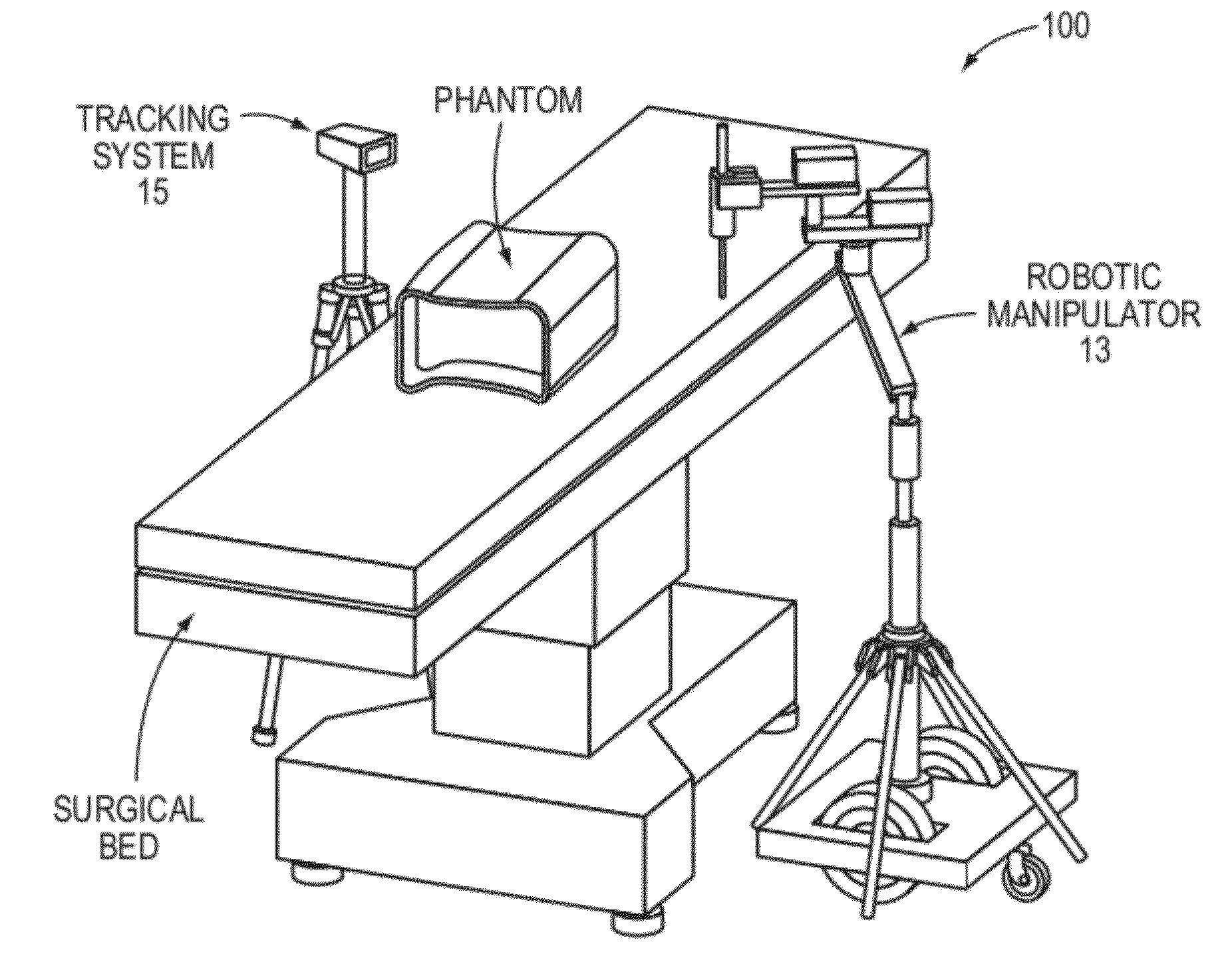Transcutaneous robot-assisted ablation-device insertion navigation system
a robot-assisted ablation and navigation system technology, applied in the field of transcutaneous robot-assisted ablationdevice insertion navigation system, can solve the problems of ineffective monitoring method and difficulty in accurately performing, and achieve the effect of convenient expansion and easy operation
- Summary
- Abstract
- Description
- Claims
- Application Information
AI Technical Summary
Benefits of technology
Problems solved by technology
Method used
Image
Examples
Embodiment Construction
[0020]A description of example embodiments of the invention follows. The teachings of all patents, published applications and references cited herein are incorporated by reference in their entirety.
[0021]The present invention introduces a transcutaneous robot assisted insertion navigation system that serves to bridge the gap in preoperative planning and intraoperative procedure by translating the preoperative plan into intraoperative execution consistently.
[0022]The preferred embodiment, the Transcutaneous Robot-assisted Ablation-device Insertion Navigation System (TRAINS) 100 is described now with reference to the Figures. Specific industrial applications include (but are not limited to): transcutaneous procedure for ablation therapy and needle placement in interventional procedures (including ablation therapy, biopsies, and laparoscopic procedures). Other applications are in the purview of those skilled in the art given this disclosure.
[0023]TRAINS is a system 100 for performing a...
PUM
 Login to View More
Login to View More Abstract
Description
Claims
Application Information
 Login to View More
Login to View More - R&D
- Intellectual Property
- Life Sciences
- Materials
- Tech Scout
- Unparalleled Data Quality
- Higher Quality Content
- 60% Fewer Hallucinations
Browse by: Latest US Patents, China's latest patents, Technical Efficacy Thesaurus, Application Domain, Technology Topic, Popular Technical Reports.
© 2025 PatSnap. All rights reserved.Legal|Privacy policy|Modern Slavery Act Transparency Statement|Sitemap|About US| Contact US: help@patsnap.com



